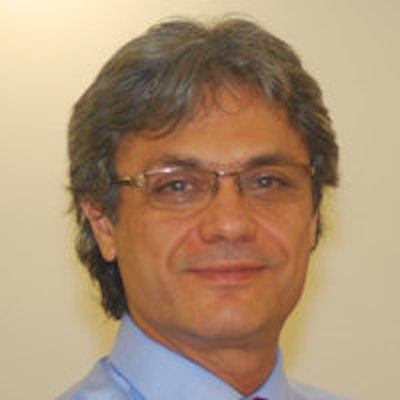
A network of 100 mobile mammography units is due to be deployed across Turkey within the next year, according to sources at the Turkish Society of Radiology (TSR). The 183 million euro ($250 million U.S.) teleradiology screening project is being funded by the Cancer Control Department of the Turkish Ministry of Health (MoH) as part of its strategy to make breast cancer screening more accessible.
Furthermore, a 1 PB data center will be installed in Ankara to archive the images and relevant information such as pathology reports.
While this teleradiology project has been supported by the TSR, other governmental projects have been met with far less enthusiasm and rather patchy success due to conflicting views between the MoH and medical professionals as to their goal.
As part of its 2007-2013 healthcare plan, the MoH attempted to create a teleradiology network between 12 sender sites in eastern Anatolia and seven receiver sites in Istanbul and Ankara. After 3.67 million euros ($5 million U.S.) were spent on the first step of what was expected to be a 21.97 million euro ($30 million U.S.) investment, the project failed due to a lack of radiologists willing to be involved in the network.
The key reason for this was the TSR believed teleradiology should not be used as a means to overcome a shortage of radiologists, which is reportedly one of the government's motives for the project.
Greater success has been achieved in the Istanbul region, where the radiology departments of more than 50 state hospitals will interconnect to positively affect workflow for primary reporting. To date, some local hospitals are now connected to each other, but the goal is for all CT and MRI to be fully linked up for daily practice within 12 months.
This will mean that radiologists in any of the state hospitals can report on CT or MR exams performed in any of the other network hospitals, through PACS and the use of a central worklist. It will also mean that patients can go to their nearest center for exams.
Turkey's experience with teleradiology stretches back at least two decades. During this time, there have been huge efforts by the government to include teleradiology and telemedicine in routine daily practice. This has gathered pace with Turkey's "e-Health strategy," an important component of Turkey's Health Transformation Project that began in 2003 and with the growing use of the government's www.sag-lik.net portal, a comprehensive infrastructure for health data access and dissemination.
Nevertheless, problems associated with legal clarity, licensing, accreditation, and ethics are hampering appropriate teleradiology services particularly for primary reading, according to Dr. Utku Şenol, president of the Turkish Medical Informatics Association and professor of radiology at Akdeniz University Hospital in Antalya.
 With high-tech imaging devices readily available across the country, Turkey's issue is quality, not quantity, according to Dr. Utku Şenol, who said teleradiology problems cannot be disentangled from wider health policies.
With high-tech imaging devices readily available across the country, Turkey's issue is quality, not quantity, according to Dr. Utku Şenol, who said teleradiology problems cannot be disentangled from wider health policies."Primary-reading teleradiology in Turkey is threatened by serious issues. The result may be unregistered, unlicensed, low-quality ghost reporting," he said.
He noted the many companies and increasing numbers of individual radiologists practicing teleradiology, and claimed that although these doctors are not experiencing problems now, primary reporting by teleradiology services might soon be jeopardized because of malpractice cases being pursued in the courts.
"The legal situation and responsibility of all teleradiology services must be clarified, as must that of the sending site and the receiving site. Ethical issues such as ghost reporting and also the need for informed consent from patients must also be clarified," Şenol said. "Furthermore, privacy is another area needing attention; authentications should be correctly defined."
Şenol cited examples in which legal and medical requirements were sometimes ignored such as source-site radiologist presence for nonemergency imaging.
"Although there are no survey data, source radiologists are sometimes not present at the sending sites," he said, explaining that this had been reported to him from radiologists involved in the government teleradiology project in eastern Anatolia.
Şenol recommends that all teleradiology vendors should be licensed, accredited, and audited to ensure they obey the regulations on standards published in 2010 by the TSR's Imaging Informatics Working Group in collaboration with the Medical Informatics Association. It will be up to lawmakers working with TSR and other medical associations to clarify legal responsibility for telepractitioners.
Outsourcing and payment models
The problems of teleradiology in Turkey should not be considered independent from the problems of radiology and the country's wider health policy, according to Şenol. He believes with adequate CT and MR machines in most towns, there is no problem with access to imaging even in rural areas. However, both in rural areas and cities, the government's health policy, specifically its outsourcing model, has led to substandard imaging.
To cope with the issue of limited resources, the government decided to outsource most CT and MR services in state hospitals. Despite the advantages this brought, such as patient access to MRI and CT, outsourcing has caused many problems.
"Turkey's problem is quality not quantity," Şenol said. "In most outsourced services, there are 120 to 140 exams per day in a 24/7 service. Patient room time should be 20 to 25 minutes for an MRI, but it works out at about 10 to 15 minutes, and this has led to a basic quality issue."
This issue has been covered in the literature. A scientific study undertaken in 2006 found serious flaws in the quality of radiological practice in Turkey (Diagnostic and Interventional Radiology, December 2006, Vol. 12:4, pp. 166-170).
Reporting falling short?
Published this year in three booklets, government-led research, conducted in 2013 in response to complaints from radiologists and clinicians, also revealed many quality problems in Turkish imaging. Specifically, the research revealed the reporting standards of half of all reports in Turkey are not sufficient.
Doctors believe these issues in quality have arisen due to unsuitable working conditions, namely an increased workload and squeezed salaries. These conditions have been compounded by an inappropriate payment model for radiology, which has resulted in radiologists proportionally being paid less now for what they do than they were in 2003, despite reporting far more than before, according to Şenol and other radiologists.
For example, a university radiologist's basic salary is around 1,000 euros per month, but lower in a state hospital, and a university professor's basic salary is around 1,500 euros per month. In a state hospital, an MRI exam, including the technical and professional fee, is now 24 euros, around half of what it cost 10 years ago. With only 1 to 2 euros earned per MRI report, radiologists need to write an extremely large number of reports to supplement their basic salaries.
Although basic salaries were lower 10 years ago, the state radiologist was free to practice privately in the afternoons, Şenol explained. Now due to a change in regulations, state radiologists can no longer work outside the public health system to supplement incomes, and inflation has eaten into any increases in basic pay.
Similarly, private radiologists have experienced a decrease in their salaries, as after reforms, about 80% of exams now take place in government centers.
"A radiologist can earn three or four times more by vastly increasing their reporting, I've even heard of one doctor reading 240 exams in one day," Şenol said. "The 'performance'-based model is wrongly named. It is in reality a 'fee-for-service' model, and many health professional organizations believe that such a bonus system is unacceptable."



















